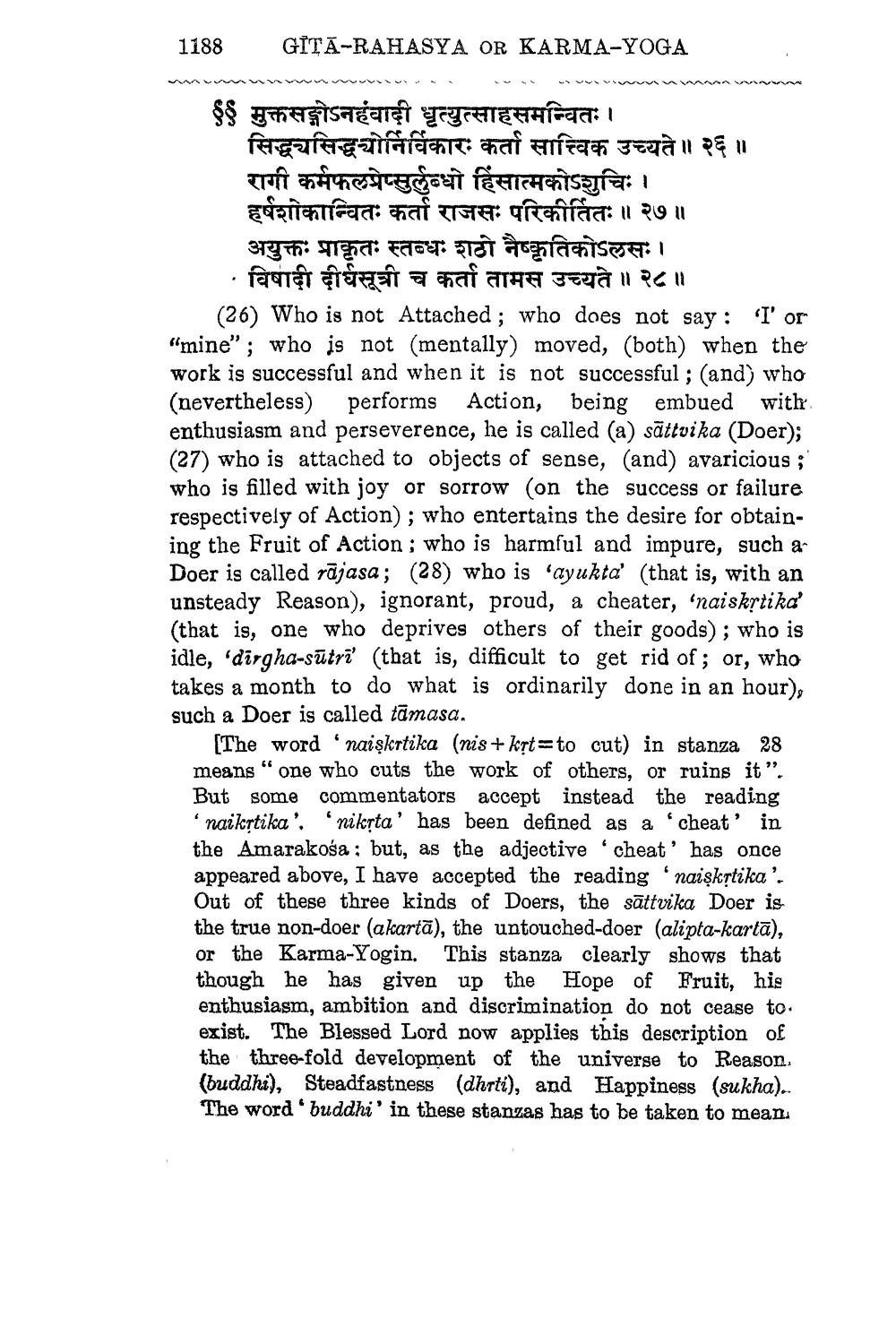________________
1188 GITA-RAHASYA OR KARMA-YOGA mummunwwwwwww wwwwwwwwwwww $$ मुक्तसङ्गोऽनहंवादी धृत्युत्साहसमन्वितः। सिद्धयसिद्धयोनिर्विकारः कर्ता सात्त्विक उच्यते॥२६॥
रागी कर्मफलप्रेप्सुर्लुब्धो हिंसात्मकोऽशुचिः। हर्षशोकान्वितः कर्ता राजसः परिकीर्तितः॥ २७॥ अयुक्तःप्राकृतः स्तब्धः शठो नैष्कृतिकोऽलसः।
fat graafit a fiat THE 34à i el
(26) Who is not Attached; who does not say: 'I' or "mine"; who is not mentally) moved, (both) when the work is successful and when it is not successful ; (and) who (nevertheless) performs Action, being embued with enthusiasm and perseverence, he is called (a) sättvika (Doer); (27) who is attached to objects of sense, (and) avaricious ; who is filled with joy or sorrow on the success or failure respectively of Action); who entertains the desire for obtaining the Fruit of Action ; who is harmful and impure, such a Doer is called rajasa; (28) who is sayukta' (that is, with an unsteady Reason), ignorant, proud, a cheater, 'naiskrtika' (that is, one who deprives others of their goods); who is idle, dirgha-sūtri (that is, difficult to get rid of; or, who takes a month to do what is ordinarily done in an hour), such a Doer is called tāmasa,
The word 'naiskrtika (nis + krt=to cut) in stanza 28 means “one who cuts the work of others, or ruins it". But some commentators accept instead the reading
naikytika'. niksta' has been defined as a cheat' in the Amarakośa; but, as the adjective cheat' has once appeared above, I have accepted the reading 'naişkȚtika'. Out of these three kinds of Doers, the sāttvika Doer is the true non-doer (akartā), the untouched-doer (alipta-kartā), or the Karma-Yogin. This stanza clearly shows that though he has given up the Hope of Fruit, his enthusiasm, ambition and discrimination do not cease to. exist. The Blessed Lord now applies this description of the three-fold development of the universe to Reason. (buddhi), Steadfastness (dhrti), and Happiness (sukha). The word 'buddhi' in these stanzas has to be taken to mean.




